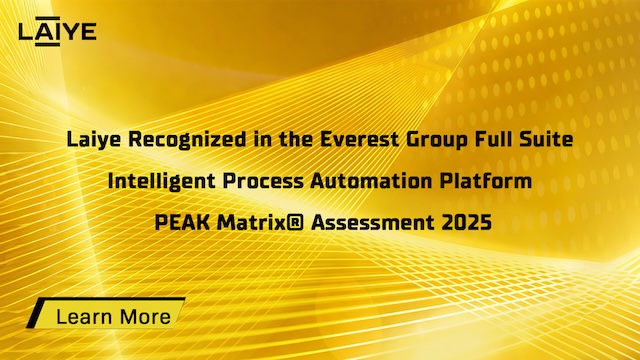Smart robots: putting legacy RPA to rest



Byline article by Neil Parker, GM EMEA at Laiye, published in The AI Journal
Google CEO Sundar Pichai has said that AI and automation are ‘more profound than the discovery of electricity or fire.” The benefits of automating mundane, repetitive admin tasks are clear: increasing and diversifying revenue, boosting employee productivity, and optimising legacy technology are just a handful of tasks that businesses stand to benefit from.
In recent times, global organizations have leaned on Robotic Process Automation (RPA) to deliver this automation, using hordes of software robots to replace actions reliant on human inputs at a lower cost. As a result, the global RPA market is expected to reach USD 7.64 billion by 2028.
However, there is a disconnect between the end-to-end ‘automation dream’ companies that have been sold, and many of the offerings in the world of RPA are failing to deliver on promises made. Legacy RPA tools have been great at automating simple, siloed tasks for a number of years, yet fall down when asked to do this intelligently, and at scale.
It’s time to look for a new solution, especially as accelerated digitisation, supply chain pressures, and hybrid-working have put RPA front and centre for European businesses. With the right mixture of RPA and AI, businesses can cut down unnecessary offshoring costs by up to 75%, and ensure their best and brightest talent is focused on innovation and business continuity.
Intelligence matters
For businesses in search of a silver bullet, Artificial Intelligence (AI) was seen as the panacea for taking simple task-based automation to a more intelligent level, and to some extent, it did. AI has given automated processes the necessary intelligence to grow and learn, performing tasks such as identifying trends and insights around changing customer behaviour, and predicting future stock supply needs.
This has sparked a wave of investment from big RPA players into smaller startups and companies developing AI products and services. However, buying AI to apply as an afterthought to your original platform is simply not the same as having it baked into your core offering. Integration troubles are unavoidable, and users inevitably waste time going through a steep learning curve as the platforms get built out.
Markets are not static, they constantly evolve. As such, any automation a business employs must be able to adapt and grow, but if it is poorly integrated with the core, it will create new headaches for IT teams.
The next frontier
Artificial Intelligence is evolving business automation beyond RPA, transforming it into ‘Intelligent Automation’. EY defines Intelligent Automation as ‘When robotic, intelligent and autonomous systems are integrated, the result is intelligent automation, widening the scope of potential tasks and processes that can be automated.’
Truly hyper-intelligent automation (HIA) mimics human intelligence, being able to combine the power of Artificial Intelligence (AI), machine learning (ML), natural language processing (NLP), optical character recognition (OCR), chatbots and RPA. Combining these technologies will allow businesses to automate complex decision-making based on standard business processes and improve decisions as the RPA learns more about the business.
This is reflected by some of the industry’s most prominent thinkers. In an interview with VentureBeat, Craig Le Clair, a Forrester analyst, explained:“Only AI-powered RPA will survive. Pure RPA companies are becoming dinosaurs.”
Gartner analysts agreed, adding, “By 2022, 80% of RPA-centric automation implementations will derive their value from complementary technologies. By 2022, 65% of organizations that deploy automation capabilities will introduce AI, ML, NLP and IDP.”
The beauty of AI-native RPA is that it is constantly adapting to its environment, and learning how to do its tasks more efficiently. Combining this learning with input from human overseers increases its accuracy and allows for efficient and simple task processing.
This enhances the sheer breadth of processes that can be automated. For example, enterprise-grade daily document processing can now be automated, including document recognition, interpretation, classification, verification, and other essential business functions. This is a game-changer for document-heavy industries with retail and health leading the charge, followed by insurance and professional services.
RPA + AI = intelligent automation
Last year, the World Economic Forum predicted that automation will create nearly 85 million jobs by 2025. The potential benefits that RPA holds, when done right, are immense. While forward-thinking businesses can currently achieve moderate results from legacy offerings, an AI-native RPA solution can tackle the drudgery of mundane, repetitive jobs and consistently accelerate operational speed is the optimal way forward.
In addition, AI-native solutions can be extended to automate even more complex processes, such as decision-making and analytics. True business transformation requires more than simply digitizing yesteryear’s processes. First, you integrate automation throughout your organisation to deliver its objectives and goals. But to be truly intelligent, it needs to inform the next set of objectives to digitally transform the business. The robots are here, let’s make sure that they’re smart ones.


